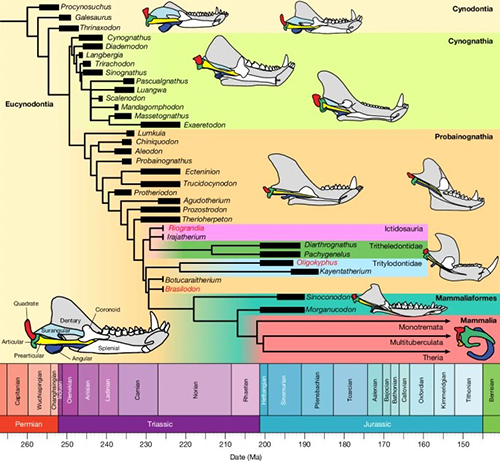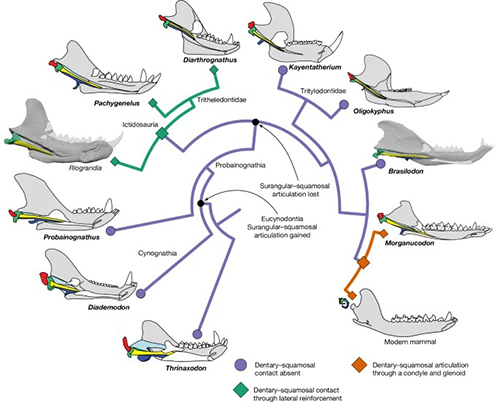A groundbreaking study published in Nature challenges long-held beliefs about the evolution of mammals, revealing that a key feature of the mammalian jaw joint evolved independently in at least two distinct groups of ancient relatives. The research, led by James R. G. Rawson and Agustín G. Martinelli, used advanced micro-computed-tomography (μCT) to analyze the jaw joints of three key non-mammaliaform cynodont species, uncovering a complex history of evolutionary experimentation.
The load-bearing dentary-squamosal jaw joint, a feature unique to mammals, has been considered a defining characteristic since it first appeared in the fossil record. However, the new findings show that this joint evolved in a group of animals called ictidosaurs over 17 million years before it appeared in the lineage that would become modern mammals. This discovery of homoplastic evolution—the independent development of similar traits in different lineages—highlights the evolutionary flexibility of this supposedly defining mammalian feature.

Fig. 1: Time-calibrated relationships of Cynodontia. (from reference)
The study found that while the jaw joint of Brasilodon, the sister taxon to Mammaliaformes, lacked the advanced joint, Riograndia showed a clear dentary-squamosal contact. This suggests that the joint evolved at least twice among probainognathian cynodonts, indicating that the feature is not as unique to mammals as previously thought.

Fig. 2: Homoplastic evolution of the dentary–squamosal jaw joint in Cynodontia. (from reference)
"This discovery is a game-changer. It forces us to rethink the way we understand the evolution of mammals and their distinctive features," said Martinelli. "It also shows how much we still have to learn about the complex history of life on Earth."
This new understanding of the mammalian jaw joint's evolution may lead to a reevaluation of other supposed unique mammalian features, suggesting that evolution is more unpredictable and opportunistic than we have appreciated. The findings also underscore the importance of continued paleontological research, as it continues to reshape our understanding of the history of life on our planet.
——
REFERENCES
Rawson, J.R.G., Martinelli, A.G., Gill, P.G. et al. Brazilian fossils reveal homoplasy in the oldest mammalian jaw joint. Nature (2024). https://doi.org/10.1038/s41586-024-07971-3

